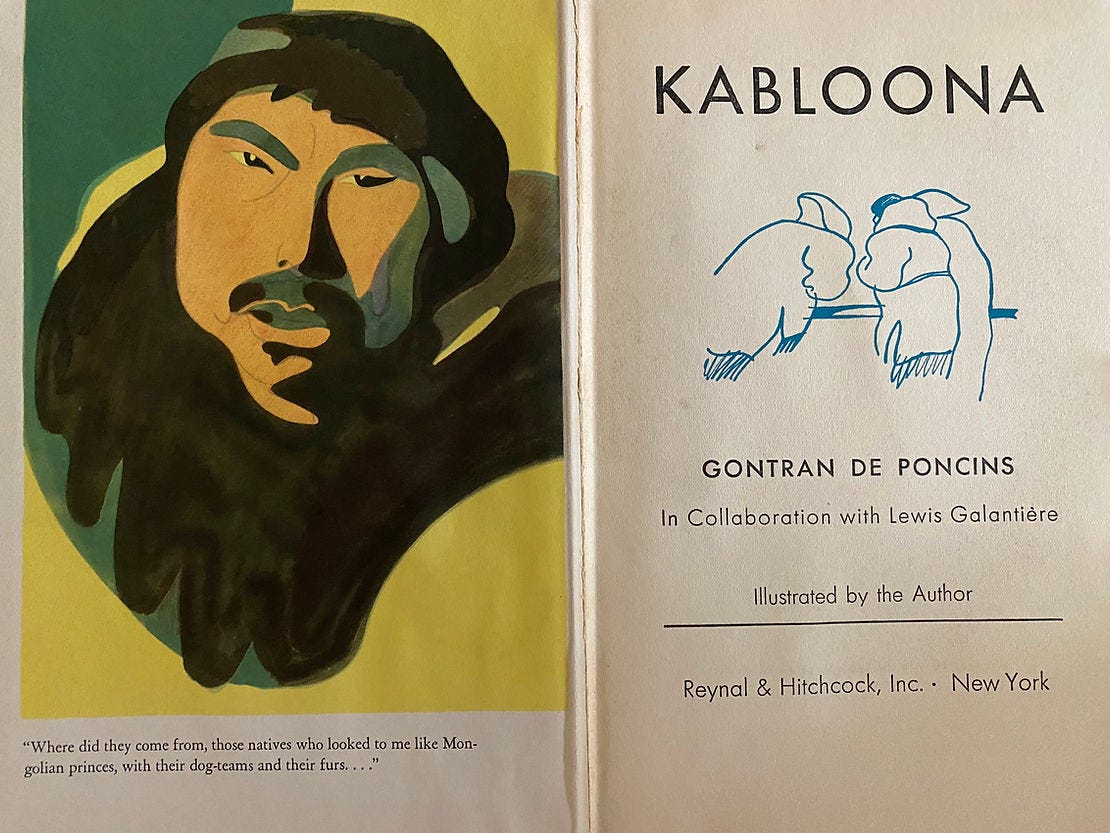Why Read: KABLOONA
An 80 year old book about a Frenchman living with the Inuit ...
This is a 1941 adventure travel classic that was the Book of the Month selection when it came out. It was a bestseller then and out of print except for Audible now. The original hardback is available at reasonable prices. It has remarkable drawings, paintings and photographs by the French author, Gontran de Poncins. I never would have read this book without my cousin’s recommendation. It was his father’s favorite book, which says a lot. Apparently he read it many times while teaching English, running a boy’s camp on an island and building a house in the woods. It all made sense to me after reading it. The book might be dated in terms of “political” sensibilities but it is beautifully written, engrossing and often very funny. It is also a bit of a shock.
The author’s 20,000-mile journey takes him from France to the Artic Circle and back when doing so certainly qualified as an “adventure”. He lives with different groups of Inuit Eskimos before snowmobiles. helicopters, satellite television and climate change arrived. Throw in a Catholic priest living for years in an ice cave and a Scottish trader whose routine makes the most compulsive of us look bipolar, and you have a book that is a shock. The writer is always in a state of bemused alarm at the otherness of the Eskimos and his journey from distaste to admiration is at the heart of the book. The Eskimos are shocked by everything the white man does since they consider him to utterly incompetent and lost – which, in a sense, he is. I completely bought the writer’s responses and his insights but soon the book took on a broader meaning. I realized that the strangeness of the story was not the shock of the new but the shock of what was. Letters take months to arrive. There is no other reliable communication with the outside world. The writer is called a “kabloona”, a derogatory and humorous term for a white man – a species many of the Eskimos had never seen before. World War Two is beginning to breakout and you have absolutely no sense of it. Everything stands out because you feel that National Geographic has barely got there. You are living in a part of the world that is still unchartered. Much of the world was like this even a hundred years ago. The British were still drawing up the first map of greater India. The world is so much smaller now. We call it a village. Too bad …


